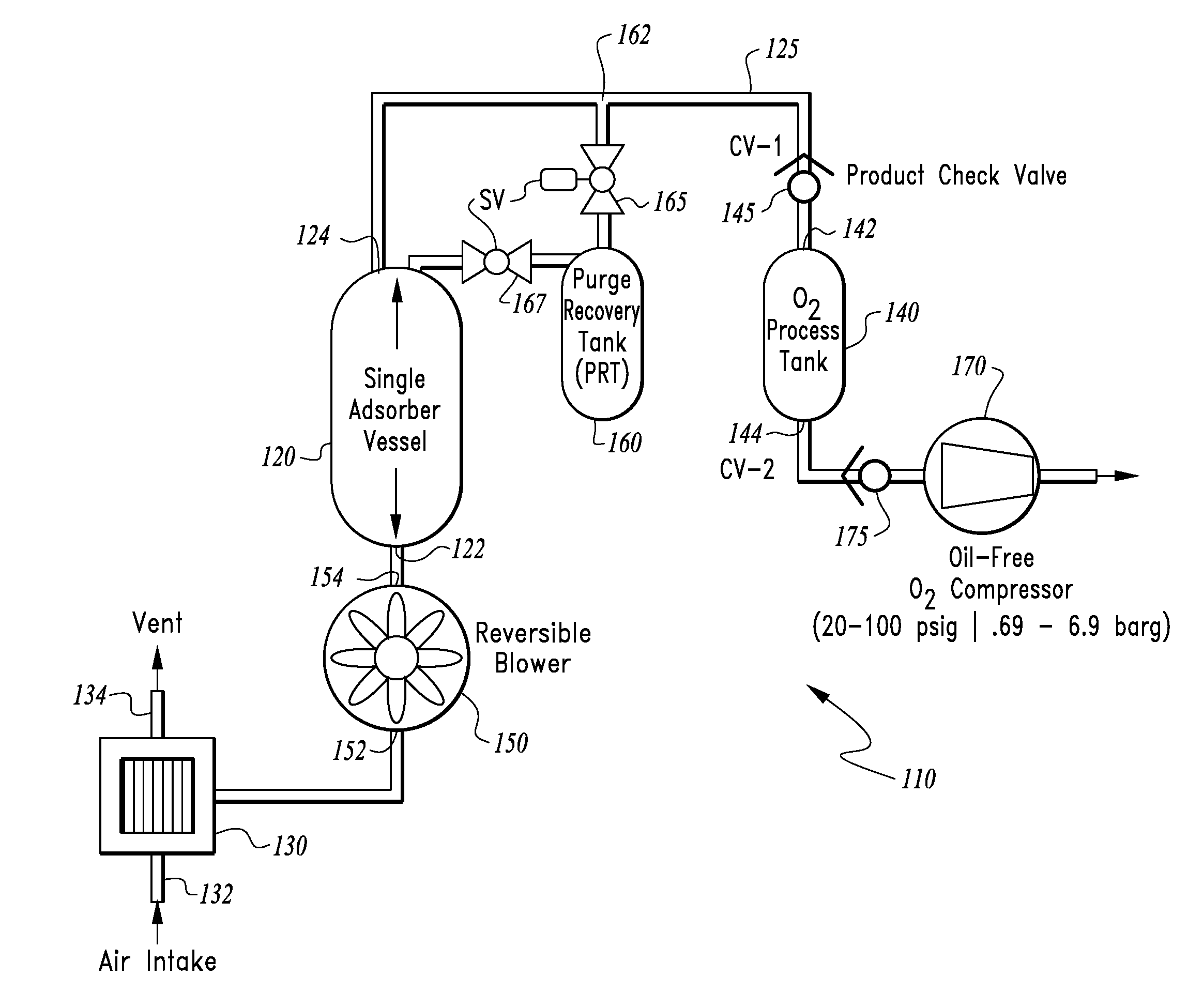Load following single bed reversing blower adsorption air separation system
a technology of adsorption air and adsorption bed, which is applied in the direction of separation process, dispersed particle separation, chemical apparatus and processes, etc., can solve the problems of poor process turndown ratio, lack of additional adsorption bed, and limited turndown of dual blower system, so as to increase flow rate and reduce the flow rate , the effect of reducing the flow ra
- Summary
- Abstract
- Description
- Claims
- Application Information
AI Technical Summary
Benefits of technology
Problems solved by technology
Method used
Image
Examples
Embodiment Construction
[0023]Referring to the drawings, wherein like reference numerals represent like parts throughout the various drawing figures, reference numeral 10 (FIG. 1) is directed to a prior art oxygen separator configured to separate / concentrate oxygen from air. This separator is modified by the air separation unit 110 of this invention (FIGS. 2-5) and the blower driving system 210 of this invention (FIG. 4), as explained in detail below.
[0024]In essence, and with particular reference to FIG. 1, basic details of the oxygen separator 10 modified by the air separation unit 110 and blower driving system 210 of this invention are disclosed. The oxygen separator 10 includes an adsorber bed 20 including an adsorber material therein which preferentially adsorbs nitrogen, CO2 and water over oxygen. A valve 30 is located downstream of the adsorber bed 20. A buffer tank 40 is provided downstream of the valve 30. A blower 50 defines a preferred form of pump located upstream of the adsorber bed 20. A cont...
PUM
| Property | Measurement | Unit |
|---|---|---|
| power consumption rate | aaaaa | aaaaa |
| power consumption | aaaaa | aaaaa |
| power rate | aaaaa | aaaaa |
Abstract
Description
Claims
Application Information
 Login to View More
Login to View More - R&D
- Intellectual Property
- Life Sciences
- Materials
- Tech Scout
- Unparalleled Data Quality
- Higher Quality Content
- 60% Fewer Hallucinations
Browse by: Latest US Patents, China's latest patents, Technical Efficacy Thesaurus, Application Domain, Technology Topic, Popular Technical Reports.
© 2025 PatSnap. All rights reserved.Legal|Privacy policy|Modern Slavery Act Transparency Statement|Sitemap|About US| Contact US: help@patsnap.com



